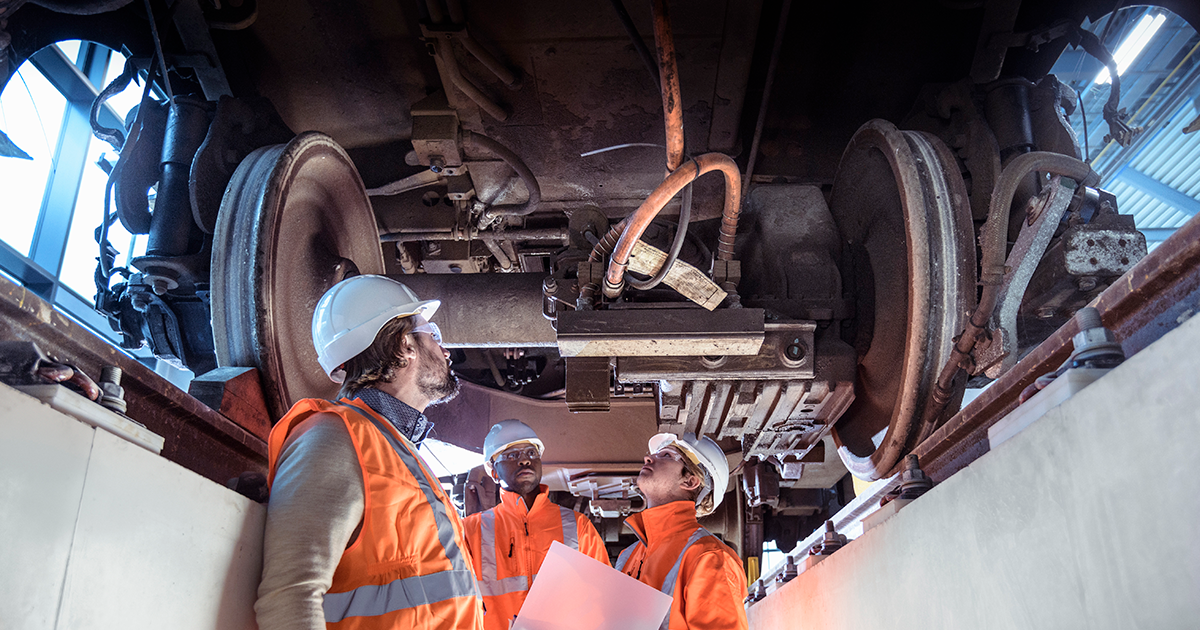

Behind Every Great Gain Is a Thousand Hidden Efforts
In the story of engineering progress, our chapter is a history of continuous innovation in bolted joint security. On the fortieth anniversary of Nord-Lock Group, we take this moment to acknowledge the thinkers, designers, engineers and operators behind the engineering marvels that have propelled society forward, and to champion the humble bolted joint as a fundamental component of safety in society and industry.
Historically, the volume of great gains has been prolific. The wheel. The pyramids. Sanitation systems and underwater tunnels, airplanes and bridges linking continents. We can photograph atoms, sail the stars, create energy from nothing more than wind and ambition. The list of human achievements is long, unfolding and rightly heralded when brought to fruition. Yet each accomplishment would be impossible without the thousand hidden efforts behind them.
It is almost funny to think of the bolted joint as one of those efforts. They are ubiquitous in every element of industry, impacting every aspect of our daily lives. Yet they are an afterthought. Even for engineers, it can take years beyond their professional education and training to not consider the integrity of the bolted joint as a given, with little need for consideration beyond their basic function.
These small criticals are like the minor notes in the score of a classical composition — widely acknowledged as important when pointed out, yet chronically underappreciated as the core elements they are. Aside from the very curious and specialists, we can’t afford to think about them constantly, to lionize them in a field of considerations competing for our attention. So we don’t. We put our trust in the integrity of the little things without a second thought. To do otherwise would overwhelm.
We take airplanes for granted. But a plane is essentially a collection of technologies and materials fastened into a single-purpose unit. At risk for material and design inefficiencies. Prone to human error. A chain of components upon which no element supersedes the importance of the other — a mechanical system in which the limits of our own capacity to trust necessarily limits us to trusting the solution as a whole, rather than every one of its individual elements.
This blanket faith is necessary — we’d go crazy otherwise — but it’s also fallible. Every new or separate element carries a risk factor. Their interdependency multiplies risk factors. And they culminate at the application’s weakest point.
From an engineering point of view, the weakest point can be anywhere — but common sense — and history — tell us those failures are often traceable back to the bolted joint. Even more jarring: One customer’s major internal study showed that failed bolted joints are due to installer error almost 80% of the time, in the incorrect application of preload for example. It only takes one bolt to seem to be tightened when it is not. Then it doesn’t matter how secure the others are — the installation is at risk, putting the application at risk.
And risk is no small thing. It is lives we are talking about. Employees at the industry site, certainly. But back to our airplane, no passenger can comprehend the degrees of trust required to get them safely off the ground and to their destination. It would be overwhelming. It would require computing capacity beyond which our brains are capable. So, we buy our ticket, and we trust.
This trust represents an acute responsibility. It bestows on the suppliers of the various elements in a complex mechanical system a requirement to live up to a well-known mantra: integrity is doing the right thing, even when no one is watching.

As the design complications and critical importance of applications have grown, so too have the requirements on the integrity of bolted joints.
The advent of hydraulic tensioning for the offshore oil industry in the 70’s, in particular, turned out to be a catalyst for lifting the importance of secure bolting — at least in the most dangerous and heavy engineering environments. While it made accurate tightening of the most demanding multi-bolt joint applications possible, it was also new and difficult to learn, and with pressures up to 1500 bar, quite dangerous.
But this new awareness put much needed emphasis on the security of the bolted joint. Where it once had been more of a means to an end, it was now a source of debate, if not concern, across many more applications than just the most obviously dangerous.
This led to some clever professionals developing new and formidable ways to establish that security during the 1980’s — the Nord- Lock wedge-locking washer, with its applicability to preventing almost any nut from loosening, being the simplest yet one of the most impactful. But also to Superbolt to make multi-jackbolt tensioning possible with hand tools, and Boltight hydraulic tensioning for general and specialist applications across a growing number of industries. And the Expander pin that altered the service of construction, forestry and other heavy machinery so much that the Swedish Ministry of Industry compared it to ball bearings for its impact on modern industry.
Today, the security of bolted joints is key to almost any mechanical application or construction on the planet. It is fundamental to more recognized technologies — and by extension, to our way of life. Freeing us to trust without question. Quietly going about the business of holding our world together.
A story in progress, worthy of celebration.